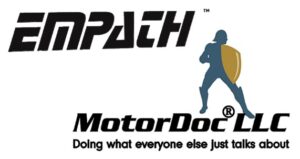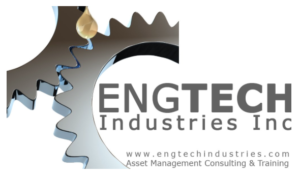Many reliability practitioners think of precision maintenance as merely “maintaining machines the right way.” In their view, as long as technicians are trained and given the latest shiny tools, they will be successful. While training and tools are certainly necessary parts of a successful program, plenty of other processes need to occur if value and return on investment is to be realized. It’s not just a matter of “do maintenance better and our problems are over.”
I once worked with an organization that had extensive skills training. Its technicians were, in fact, above average in their skill levels, but, organizationally, they weren’t on the same page. This manifested in occasional, isolated successes but little sustainable overall improvement. More recently, I’ve become aware of case where well-trained technicians missed a couple of important items on the pre-alignment checklist, resulting in almost a days worth of extra downtime. The common denominator in these incidents is that the individuals were trained, but no systems were in place to ensure people did the right things at the right time.
Over the course of several articles for The RAM Review, we will present and explain the key steps in implementing precision maintenance. Some will be technical around the many tips and tricks for making assets more reliable. Others will be how to change the culture to ensure that the technical stuff is applied. Keep in mind that If we don’t address both of these facets of precision maintenance, sustainable results are, at best, a long shot.
‘WHAT IS PRECISION MAINTENANCE?’
A good place to start would be to ask ourselves the above question. It is essential that we understand that precision maintenance is a strategic initiative focused on a results driven process. As such it needs a defined process, that ensures the work is accomplished in a known, precise, disciplined and documented manner. Asset performance improvement is measured, documented and published. Since we live in the real world we will find that despite our best efforts we may not achieve the precision result we sought on a particular asset. First, we need to accept that this is perfectly normal, albeit a bit disappointing. In these situations, it is vital to:
1. Document the improvements that were made.
and
2. Ensure that more actions are planned and scheduled to further improve the machine.
Once this type of thinking takes hold, the focus switches to continuous improvement, and sustainability is easier.
THE ROAD MAP
As with any type of cultural change, implementation of precision maintenance is accomplished through a series of progressive steps. We base these steps around the following guiding principles of change management:.
I. Determine what needs to be improved.
a. Pick small areas or targets, don’t try to change the entire facility all at once. if you create enough small beacons of light, they will coalesce into a powerful floodlight.
II. Closely review the current state of affairs.
a. Evaluate the current state with honesty, Try to eliminate emotion from the process.
b. Ignore the who’s, how’s and why’s of the current state and the associated baggage that discussion often brings, just try to understand current state. Don’t be afraid to expose weakness.
c. Remember, the worse things are, the easier it should be to show improvement.
III. Determine how much progress is possible.
a. This is often a difficult discussion, but a crucial one in keeping us from setting goals that are too high.
b. Human psychology being what it is, the very second we think a goal is not achievable we give up. (There are literally thousands of examples of this behavior, and certinaly more than space allows for discussion here. Instead, simply think about dominant sports teams.)
IV. Develop and have an approved application-action plan with an established set of metrics to measure success.
a. Must have a plan approved by all parties.
b. Lay it out for the next year and work the plan.
V. Identify and apply realized best practices.
a. This is especially important with multi-site corporations.
b. Creating and actively using a system to exchange best practices and findings acts as a force multiplier.
c. Learn from others (successes or mistakes).
VI. Discover other improvements that should be implemented.
VII. Create methods to sustain and institutionalize (culture change) the initiative.
Keep in mind that there are four main steps in implementing precision maintenance:
1. Creating the strategy, which includes setting strategic intent, overall goals and defining the business case. This step will also define the tactics along with associated goals and metrics.
2. Building the plan, where we develop the application work and associated measurements. This includes the timeline, responsibilities expected outcomes in terms of value demonstrated, etc.
3. Applying the work, which is understanding the technical requirements to improve the asset condition and performance. Literally the nuts and bolts of the process.
4. Capturing and publishing results.
FINAL THOUGHTS
As you consider implementation of precision maintenance, remember that training, tools, and skills alone cannot get the job done. A system to execute the plan must be in place. Furthermore, that plan needs to be developed based on something other than the typical emotional reaction to a significant event. In addition to including include steps, timelines, and responsibilities, the plan should take into consideration the psychology of change by clearly demonstrating WIIFM (what’s in it for me) for all parties involved. Easy right?
Next week’s article in this precision-maintenance series will focus on creating the strategy.TRR
ABOUT THE AUTHOR
Tim Dunton is the Director of Product Development and thought leader for Reliability Solutions, a UT-RMC training partner based in Northwest Florida. He has over 40 years of experience in vibration analysis and technical training related to the reliability of rotating machinery, including extensive work and qualifications in machinery troubleshooting, problem-solving, and condition-monitoring program design, implementation and operation. His background also includes significant experience in workforce development, curriculum development, instructional design, and Reliable Manufacturing. Dunton holds DTI Class 1 Certification, CMRP, and CMRT Certifications. Email: timdunton@reliabilitysolutions.net.
Tags: reliability, maintenance, availability, RAM, maintenance management, change management, workforce issues, skills development, training and qualification



